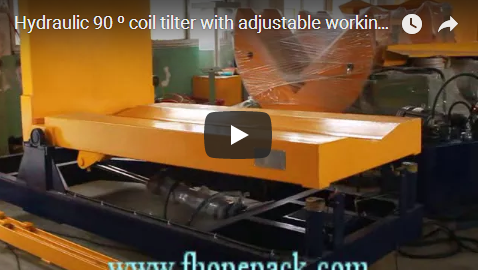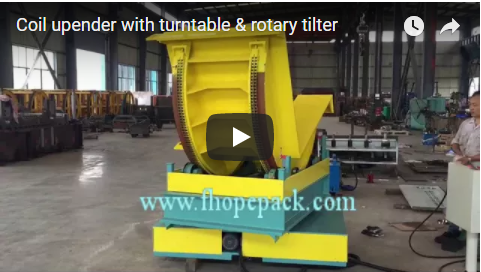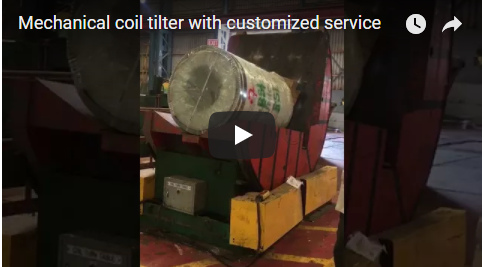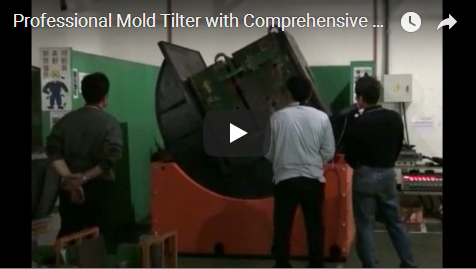Revolutionizing Pallet Handling: A Deep Dive into 90-Degree Pallet Changers
In modern logistics and manufacturing environments, efficient and safe pallet handling is paramount. While standard operations often suffice, certain loads present unique challenges, particularly those sensitive to full inversion. This is where the 90-degree pallet changing machine, also known as a 90-degree pallet inverter or load tipper, demonstrates its specific value. As a specialized piece of material handling equipment, it offers a precise solution for exchanging pallets without compromising load integrity.
Video Caption: Demonstrating the operational cycle of a typical 90-degree pallet changing machine.
1. Understanding the 90-Degree Pallet Changing Process
Unlike traditional 180-degree pallet inverters, the 90-degree model employs a gentler approach. Here’s a typical operational sequence:
- Loading: The palletized load is placed onto the machine's loading platform, often via forklift or integrated conveyor system.
- Clamping: Secure side clamps engage the load, holding it firmly in place. This is critical for stability during the tilting process.
- Tilting: The machine gently tilts the clamped load 90 degrees onto its side.
- Pallet Exchange: With the load securely resting on its side, the original pallet is now easily accessible at floor level (or a convenient height) for removal. A new pallet (e.g., a hygienic plastic pallet, a shipping pallet, or a slip sheet) is then positioned.
- Return Tilt: The machine tilts the load back to its upright position, now resting securely on the new pallet.
- Release & Unload: The side clamps release, and the load, now on the desired pallet, is ready for removal.
From firsthand observation in busy warehouses, the efficiency gain compared to manual re-palletizing, especially for awkward or heavy loads, is immediately apparent. The entire cycle is often completed in under a minute.
2. Key Features and Technical Specifications
While specific models vary, most industrial-grade 90-degree pallet changers share common characteristics:
- Construction: Heavy-duty steel frame designed for durability in industrial settings.
- Clamping System: Adjustable side pressure plates, often hydraulically or pneumatically operated, to accommodate various load sizes and ensure secure handling.
- Tilting Mechanism: Typically powered by robust hydraulic cylinders or electric motors with reliable gearbox systems.
- Control System: User-friendly controls, ranging from simple push-button interfaces to programmable logic controllers (PLCs) for integration into automated lines.
- Safety Features: Essential components include safety fencing/light curtains, emergency stops, pressure relief valves (for hydraulic systems), and interlocking guards.
Typical Specification Comparison:
| Feature | Standard Range/Options | Considerations |
|---|---|---|
| Load Capacity | 1,000 kg - 3,000 kg (2,200 lbs - 6,600 lbs) | Must match maximum anticipated load weight. |
| Tilt Angle | Fixed 90 degrees | Defines the machine's core function. |
| Power Source | Electric (e.g., 480V/3Ph/60Hz) or Hydraulic Power Pack | Electric: Cleaner, quieter. Hydraulic: Higher power. |
| Control Voltage | Typically 24V DC | Standard for safety and PLC compatibility. |
| Cycle Time | 45 - 90 seconds (approx.) | Influences overall throughput. |
| Pallet Handling | Accommodates standard pallet sizes (GMA, EURO, etc.) | Check compatibility with your specific pallet pool. |
| Safety Standards | Conforms to relevant ANSI/ASME, CE standards | Crucial for operator safety and compliance. |

3. Core Benefits for Industrial Operations
Investing in a 90-degree pallet changer delivers tangible advantages:
- Enhanced Load Stability: The 90-degree tilt is ideal for loads prone to shifting or damage if fully inverted, such as bagged goods, pails, drums, or layered products.
- Improved Operational Efficiency: Dramatically reduces the time and labor required for manual pallet exchange, boosting overall throughput. Operators often report significant time savings per pallet swap.
- Increased Workplace Safety: Minimizes manual lifting and awkward postures associated with re-stacking loads, reducing the risk of musculoskeletal disorders (MSDs). Automated clamping and tilting provide a controlled, safer process.
- Damage Reduction: Gentle handling and secure clamping minimize the risk of product damage during the transfer process, saving costs associated with unsaleables.
- Hygienic Compliance: Facilitates easy transfer from wooden pallets to sanitized plastic or aluminum pallets, essential in industries like food & beverage and pharmaceuticals (meeting GMP requirements).
- Versatility: Can handle various load types and facilitates switching between different pallet types (e.g., wood to plastic, in-house to shipping) or replacing damaged pallets efficiently.
4. Common Industry Applications
The unique capabilities of the 90-degree pallet changer make it suitable for various sectors:
- Food & Beverage: Transferring goods from wood pallets to hygienic plastic pallets for entry into production areas.
- Pharmaceuticals: Meeting stringent cleanroom and GMP standards by swapping pallets before sensitive processing.
- Chemical Industry: Handling bagged chemicals, drums, or containers that cannot be fully inverted.
- Logistics & Warehousing: Replacing damaged pallets, transferring loads to shipping pallets, or consolidating loads.
- Printing & Paper: Handling stacks of paper or printed materials that require stable, side-supported tilting.
5. Selecting the Right Machine for Your Needs
Choosing the appropriate 90-degree pallet changer involves considering:
- Load Characteristics: Weight, dimensions, stability, and sensitivity of your typical loads.
- Throughput Requirements: How many pallets need exchanging per hour or shift?
- Operating Environment: Is a washdown-capable machine needed? Any temperature extremes (cold storage)?
- Automation Level: Standalone operation or integration with conveyor systems or AGVs?
- Budget: Balancing upfront investment against long-term ROI (labor savings, damage reduction, efficiency gains).
Consulting with experienced manufacturers and potentially viewing demonstrations with your specific product types is highly recommended. A common scenario we encounter is clients underestimating the instability of their loads until they see the secure clamping action of a purpose-built machine.
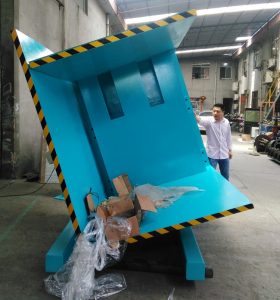
Conclusion
The 90-degree pallet changing machine is more than just a piece of equipment; it's a strategic tool for optimizing material flow, enhancing safety, and protecting valuable products. For operations dealing with loads unsuitable for 180-degree inversion, it offers a precise, efficient, and reliable solution. By carefully evaluating load requirements and operational goals, businesses can leverage this technology to streamline their pallet handling processes, contributing positively to their bottom line and overall operational excellence.
For more detailed information on various pallet handling solutions, explore the range of pallet inverters and exchangers available.


